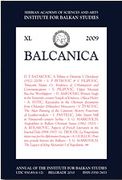Sur les Celtes au Bas-Danube
More toponyms and a hydronyme, all from Celtic origin, identified at the Lower Danube, are to add to the literary antique sources and to the archaeological discoveries to confirm the Celtic presence from the III rd c. B.C. in the region.
More...
